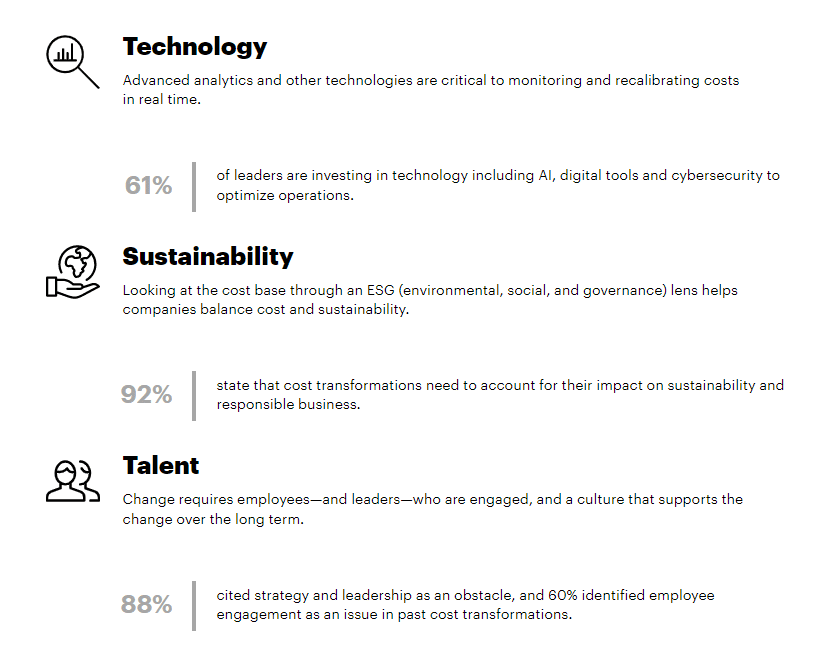In brief
- Business leaders are in the midst of a perfect storm, facing record inflation, cost pressures, global volatility, and labor and material shortages.
- To navigate these challenges while meeting stakeholder demands and delivering growth, leaders are harnessing cost transformation.
- Zero-based transformation enables companies to reimagine the business, reset the cost base and invest in new strategic priorities.
Rethink cost structures and resource allocation.
Reimagine the business, reset the cost base, and free up funds.
The value of asset reallocation and freed funds? They can be used to invest in the strategic priorities that drive growth and to develop new capabilities that build resilience and agility for the future.
Going from zero to a hundred
Zero-based transformation is not a budgeting exercise. It’s about deeply understanding costs across the business and aligning to the priorities that will create value. To succeed, it must be an integral part of the organization’s design, driven by technology, integrating sustainability and empowering talent.

Resetting for growth
Transformations of the past—and their failures—can stay in the past. Today, cost transformations themselves are transforming, starting at zero. What are the keys to success? In our experience, there are four:

